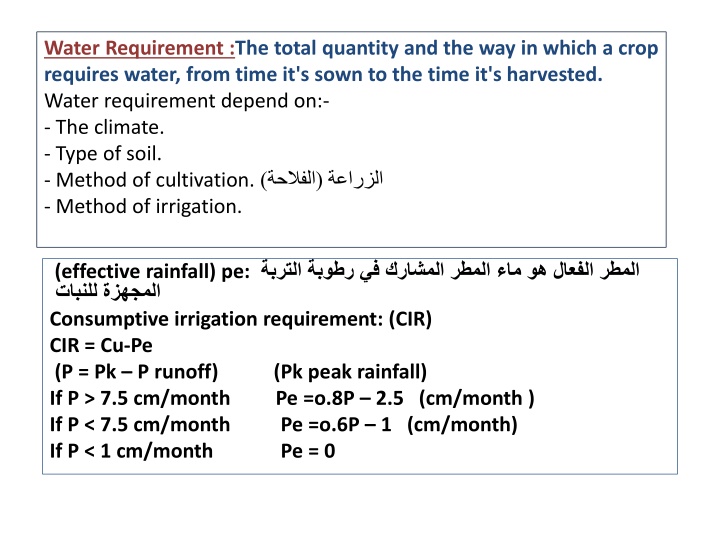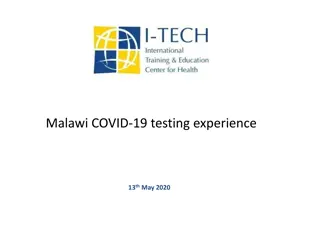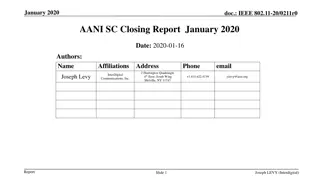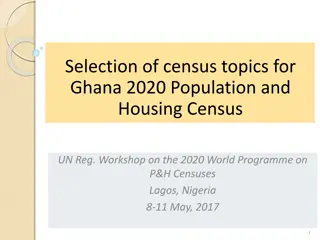
Crop Water Requirement Calculations
Learn about the factors influencing water requirements of crops, including climate, soil type, cultivation method, and irrigation techniques. Explore formulas for Consumptive Irrigation Requirement (CIR), Net Irrigation Requirements (NIR), Field Irrigation Requirements (FIR), and Irrigation Efficiencies (IE). An example scenario involving water diversion, seepage losses, and irrigation project area is also provided for practical understanding.
Download Presentation

Please find below an Image/Link to download the presentation.
The content on the website is provided AS IS for your information and personal use only. It may not be sold, licensed, or shared on other websites without obtaining consent from the author. If you encounter any issues during the download, it is possible that the publisher has removed the file from their server.
You are allowed to download the files provided on this website for personal or commercial use, subject to the condition that they are used lawfully. All files are the property of their respective owners.
The content on the website is provided AS IS for your information and personal use only. It may not be sold, licensed, or shared on other websites without obtaining consent from the author.
E N D
Presentation Transcript
Water Requirement :The total quantity and the way in which a crop requires water, from time it's sown to the time it's harvested. Water requirement depend on:- - The climate. - Type of soil. - Method of cultivation. ( ) - Method of irrigation. (effective rainfall) pe: Consumptive irrigation requirement: (CIR) CIR = Cu-Pe (P = Pk P runoff) (Pk peak rainfall) If P > 7.5 cm/month Pe =o.8P 2.5 (cm/month ) If P < 7.5 cm/month Pe =o.6P 1 (cm/month) If P < 1 cm/month Pe = 0
Net irrigation requirements (NIR) NIR = CIR + Le (Le: is leaching requirements: ) NIR = Cu Pe + Le Field irrigation requirements (FIR): FIR = NIR + Losses
Relation between Time, Discharge, Depth and Area. ? =? QT> Qg> Qn Qlc= discharge of losses of canal Qlf= discharge of losses of farm Qt= total discharge Qg= Qn+ Qlf Qt= Qg+ Qlc , = ? ? ? ? ? = ? ? ??? ??? ?? ? = ? ???? ??? ????? ?? ? = ? ??
Total depth (dt) Is the depth of water diverted from the irrigation water source. dt= dg + dlc Gross depth (dg) Is the depth of water (available depth) applied at the farm gate. dg= dn+ dlf+ LR - Pe Net depth (dn) Is the depth of water applied and stored in root zone (it is only available for plant growth). Qlf* ??? (?? ??) ???? ?? ??????????= An *???
Irrigation Efficiencies (IE) 1) Conveyance Efficiency. (Ec) Is the percentage between the water applied from farm gate to the water diverted from water source. ?? =?? ?? 100 Or 2) Water Application efficiency (Ea) Is the percentage between the net depth in the farm to the gross depth from farm head percentage between stored in the soil root zone during the irrigation delivered to the farm. ?? =?? ?? 100 Or ?? =?? ?? 100 In normal irrigation practice, surface irrigation efficiencies of application are in the range of 60% whereas well- designed sprinkler irrigation systems are generally considered approximately 75%. ??? 1) Surface runoff from farm 2) Deep percolation below the farm root zone soil gate. Or the the water irrigation and the water ?? =?? ?? 100 Which depend on the seepage from canal, evaporation growth of plant in canal (i.e depend on losses from canal). to be
Ex1) Water is diverted from a reservoir to an irrigation project through an earth canal at a rate of 5 cumec (m3/s), the seepage losses where estimate to be (0.1 m3/sec/km) and the length of canal is 10 km at the area of irrigation project 1000 Mishara. The depth of water to be applied stored is 10 cm and the water is delivered one day per irrigation. What are the discharge (Qg) and Ea% and the discharge of losses (Qlf). Assuming the losses occurs at a half time. Ans. ? = 1000 ??? ??= 5 ????? ,???= 0.1 ????? /?? ?? = 10 ?? ,?? = 10 ?? ,?? = 1 ??? ???= 0.1 10 = 1 ????? 1) Qg=Qt Qlc= 5-1 = 4 m3/s ?? =?? ?? 100 Qg* tg= A * dg 4 *24*3600 = (1000 * 2500) * dg dg = 13.8 cm 2)?? = 13.8 100 = 72.3% Qlf* tlf= A * dlf Qlf 1 24 3600 = 1000 2500 Qlf= 1.1 m3/s. 10 13.8?? 10?? 100
















